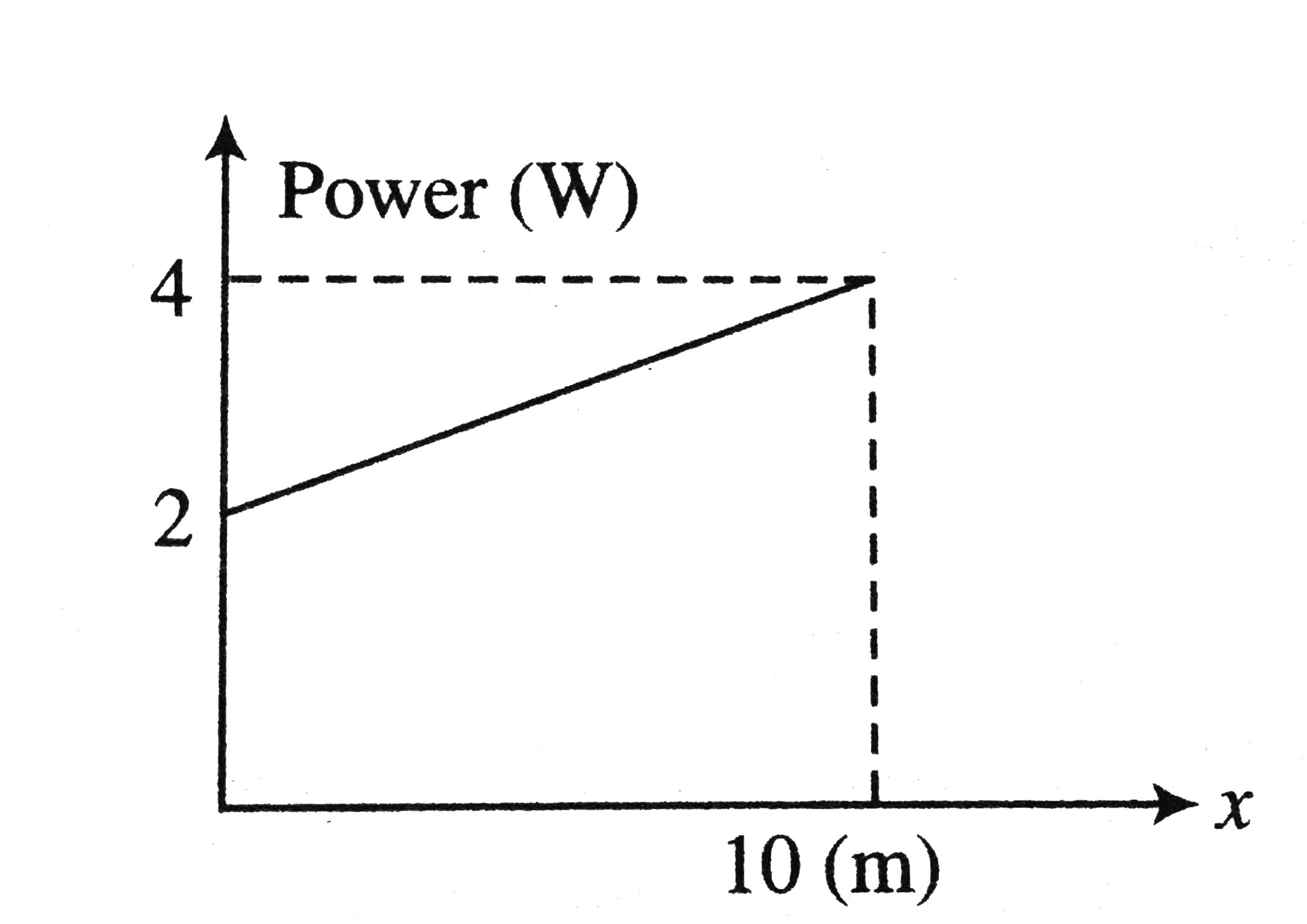A particle A of mass 10/7kg is moving in the positive direction of x−aξs. At initial position x=0, its velocity is 1ms−1, then its velocity at x=10m is (use the graph given)

(a) 4ms−1
(b) 2ms−1
(c) 3√2ms−1
(d) 1003ms−1
The correct Answer is:A
Area under P−x graph
=∫pdx=(mdvdt)vdx=v∫1mv2dV
=[mv33]v1=107×3(v3−1)
From the graph, area=12(2+4)×10=30
or 107×3(v3−1)=30
or v=4ms−1
Alternative method:
From graph
P=0.2x+2
mvdvdxv=0.2x+2
mv2dv=(0.2x+2)dx
Now integrating both sides, we get
v∫1mv2dv=10∫0(0.2x+2)dx
v=4ms−1
Topper's Solved these Questions
- WORK, POWER & ENERGYBOOK - CENGAGE PHYSICSCHAPTER - WORK, POWER & ENERGYEXERCISE - Multiple Correct
25 Videos
- WORK, POWER & ENERGYBOOK - CENGAGE PHYSICSCHAPTER - WORK, POWER & ENERGYEXERCISE - Linked Comprehension
55 Videos
- WORK, POWER & ENERGYBOOK - CENGAGE PHYSICSCHAPTER - WORK, POWER & ENERGYEXERCISE - Subjective
23 Videos
- VECTORSBOOK - CENGAGE PHYSICSCHAPTER - VECTORSEXERCISE - Exercise Multiple Correct
5 Videos
Similar Questions
7.A particle A of mass 10/7kg is moving in the positive direction of x .Its initial position is x=0 & initial velocity is 1m/s .The velocity at x=10 is: (use the graph given)
View SolutionA particle of mass 10−2kg is moving along the positive x axis under the influence of a force F(x)=−K/(2x2) where K=10−2Nm2. At time t=0 it is at x=1.0m and its velocity is v=0.
(a) Find its velocity when it reaches x=0.50m.
(b) Find the time at which it reaches x=0.25m.
View Solution
Knowledge Check
The velocity of a particle moving in the positive direction of x-axis veries as v=10√x. Assuming that at t=0, particle was at x=0
AThe initial velocity of the particle is zeroBthe initial velocity of the particle is 2.5ms.CThe accelration of the particle is 2.5ms2.DThe acceleration of the particle is 50ms2.A particle of mass 1031kg is moving with a velocity equal to 105ms−1. The wavelength of the particle is equal to
A0B6.6×10−8mC0.66mD1.5×107mA particle moving in the positive x-direction has initial velocity v0. The particle undergoes retardation kv2 , where vis its instantaneous velocity. The velocity of the particle as a function of time is given by:
Av=v0/(1+kv0t)Bv=2v01+ktCv=v0ktDv=v0(1+k2v20t)
A particle is moving along x-direction with a constant acceleration a. The particle starts from x=x0 position with initial velocity u. We can define the position of the particle with time by the relation
x=x0+ut+12at2
plot the position of the particle in relation with time is following situations
(i) If initial position of the particle is on negativ x-axis, initial velocity is positive and acceleration is negative.
(ii) If initial position is positive, initial velocity is negative and acceleration is positive.
View SolutionA particle starts from rest at the origin and moves along the positive x direction. Its acceleration a versus position x graph is shown in the figure. The velocity of the particle at x = 6 m is?
View SolutionThe velocity of a particle moving in the positive direction of the X-axis varies as V=K√S where K is a positive constant. Draw V−t graph.
View SolutionA particle moving in the positive x-direction has initial velocity v0. The particle undergoes retardation kv2 , where vis its instantaneous velocity. The velocity of the particle as a function of time is given by:
View SolutionAt the moment t=0 particle leaves the origin and moves in the positive direction of the x-axis. Its velocity varies with time as v=10(1−t/5). The dislpacement and distance in 8 second will be
View Solution
